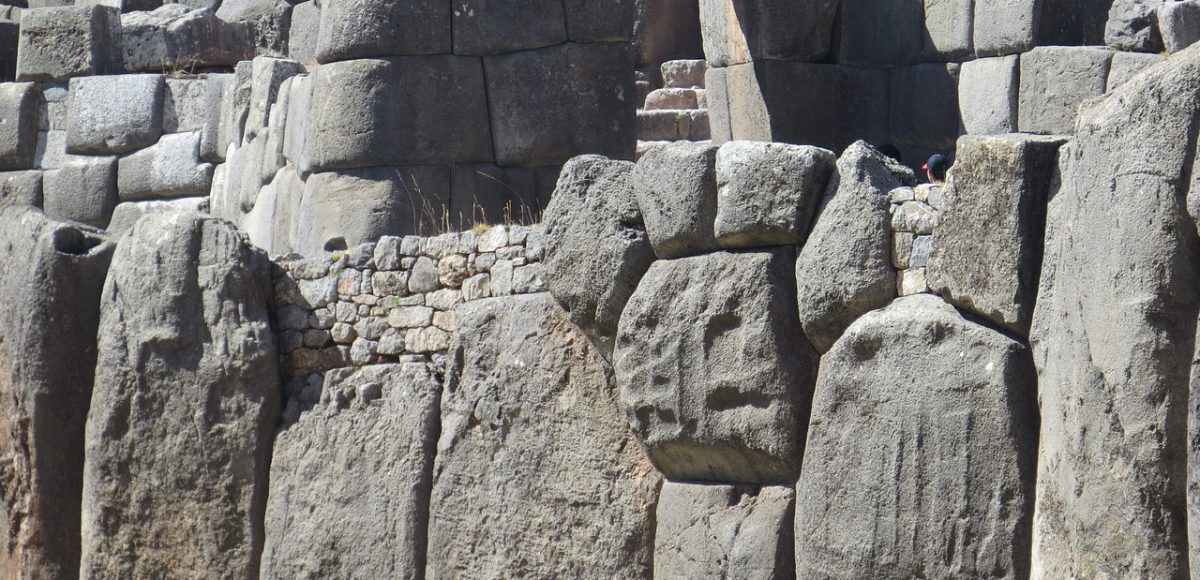#8 — Pages 163-164 of “Mysteries of Ancient South America”, by Harold T. Wilkins, also carries the following story of an Incan treasure hoard below Cuzco:
“…In the archives at Cuzco, I have seen an old, yellowed parchment, insect-bitten, as is the way in these countries, written by one Felipe de Pomares. He tells a romantic story about an Inca hoard of Arabian Nights’ splendor and variety, sealed up somewhere in or under the ancient fortress of Cuzco, on the Sachsahuaman Hill.
“Carlos Inca, a descendant of an Inca emperor, had married a Spanish lady, Dona Maria Esquivel, who did not think he was ambitious enough on getting on as he ought, and did not keep her in the style she deemed befitting her rank, or his descent from kings.
“’ You may call yourself Inca — a lord, or hidalgo — but you are only a poor Indian,’ she one day twitted him.
“Carlos, who did not rule his poultry run in the way advised by old Spanish hidalgos, or, yesterday, by ex-Wilhelm II, Rex et Imperator of Prussia and the German Reich, that is, as cock of the walk, was content to keep oviedos (sheep) and alpacas, and not worry about gold of any origin.
“She somehow found out that he knew where great treasures were hidden. The poor Carlos was plagued, night and day, until, to gain a night’s peace, he consented to blindfold his wife, and, later at night, led her out into the patio of the old hacienda.
“Under the cold light of the stars, when all around were asleep, and no unseen eye was on the watch, he took her by the shoulders, and, although she was exposing him to serious risk of prison, or torture in Cuzco, twirled her around three times. Then, deeming she had become disoriented, he led her down some steps into a concealed vault in or under the fortress (the ancient Inca fortress of ‘Sachsahuaman’).
“He removed the bandages, and Dona Maria’s tongue for once was silenced. She stood on the dusty, stone floor of an ancient vault cluttered with gold and silver ingots, exquisite jewelry, and temple ornaments. Round the walls, ranged in fine gold, were life-size statues of long-dead and gone, Inca kings. Alone, the golden image of the Sun, on which the old Incas set the greatest store, was missing; but the lovely goldsmiths’ work was of the same artistic creation as the gold and jeweled plants and flowers which the Peruvian workers made for those wondrous gardens on the isle of Puna, in the northern part of the old Empire (modern Gulf of Guayaquil), where the Incas retired to hear the melancholy music of the Pacific combers on the beaches below.
“Don Carlos was the custodian of the secret, and from him it passed to a successor. As Mr. Squier, one time U.S. Commissioner in Peru said in 1870:
‘All I can say is if that secret chamber she had entered has not been found and despoiled, it has not been for want of digging… Three hundred years have not sufficed to eradicate the notion that enormous treasures are concealed within the fortress of Cuzco. Nor have three hundred years of excavation, more or less constant, entirely discouraged the searchers for tapadas, or buried treasure mounds.’
“Even today, in 1945, the secret of that vault under the Sachsahuaman hill may still remain locked up in the breast of some descendant of the Inca. The last man of whom I heard in search of these treasures, was one Tito Cusi Ticcapato, said to have Inca blood in his veins. It was in 1928, and he planned to accompany an American expedition to quarter another ancient hill near Cuzco, where he said the lost caches lie.
“He was also an inventor and sought for Inca gold to promote and exploit his creations.
What struck his imagination, as he said, was ‘the fact, senores, that the old Incas wall-papered their houses with thin sheets of beaten gold’”.
*******
